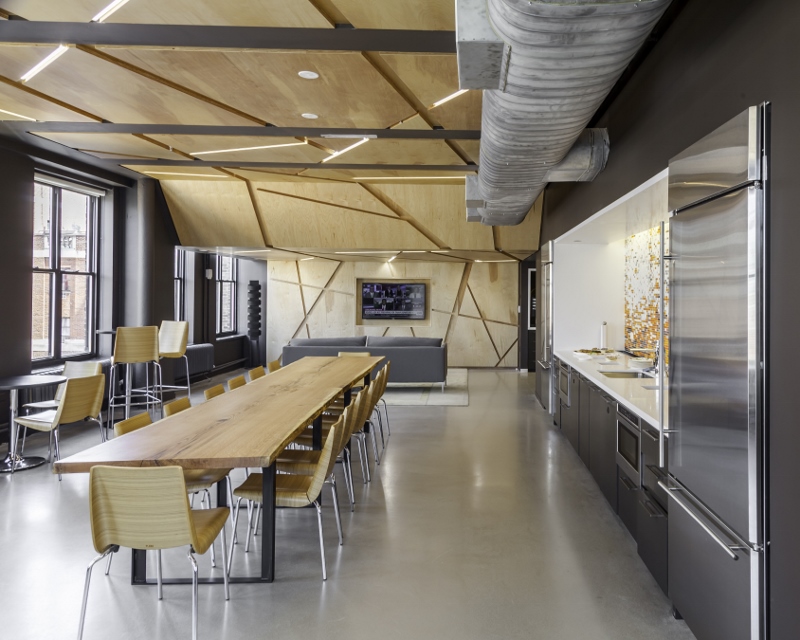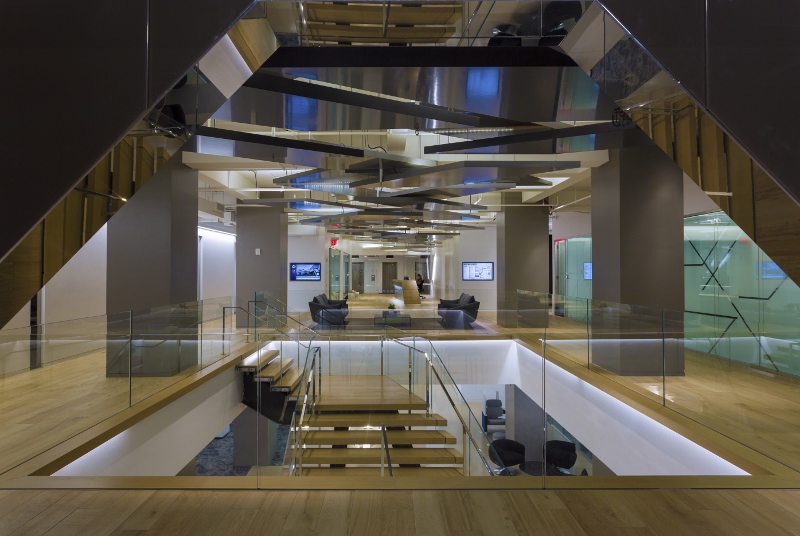What to Know about the WELL Building Standard—Sound
by Ethan Bourdeau
The WELL Building Standard™ (WELL) sets performance requirements in seven Concepts relevant to occupant health in the built environment—air, water, nourishment, light, fitness, comfort, and mind. WELL Certified™ spaces can help create a built environment that improves the nutrition, fitness, mood, sleep patterns, and performance of its occupants. Within the concept of comfort specifically are features that pertain to acoustical comfort and how acoustical design elements can aid occupant well-being and productivity.
Built environments can harbor sounds that are distracting and disruptive to work or relaxation. Employee surveys show that acoustic problems are a leading source of dissatisfaction within the environmental conditions of an office. As acoustic comfort is determined in part by the physical properties and contents of environments, the WELL Building Standard aims to shape spaces to mitigate unwanted indoor noise levels and reduce exterior noise intrusion in order to enhance social interaction, learning, satisfaction, and productivity. While noise is ubiquitous, the WELL Building Standard is able to adopt policies, technologies, and practices that ensure quieter acoustical environments and minimize our exposure to harmful and unnecessary sound.
Projects that aim for WELL Certification are required to achieve all preconditions to achieve Silver Certification. For acoustics, these features include meeting Exterior Noise Intrusion and Internally Generated Noise requirements. Projects can also pursue design optimizations to achieve Gold and Platinum Certification. For acoustics, these include Reverberation Time, Sound Masking, Sound Reducing Surfaces, and Sound Barriers.
There are features throughout the standard that also require Performance Verification in order to pass (e.g., air/water quality testing, HVAC commissioning, etc.) Performance Verification is carried out by a WELL Assessor who, in the case of acoustics, is trained to use a sound level meter to measure Exterior Noise Intrusion, Internally Generated Noise, Reverberation Time, and Sound Masking. The performance requirements for these features are listed below:
Exterior Noise Intrusion—The average sound pressure level from outside noise intrusion does not exceed 50 dBA when measured 1m (39 inches) away from window wall in a regularly occupied space during a period where adjacent spaces are unoccupied but within 1 hour of normal business hours. For Multi-Family Residential projects must follow the same requirements in LEED v4 for Acoustic Comfort which requires that the max background noise level due to exterior noise sources cannot exceed 40 dBA based on peak hour Leq tested in acoustically sensitive rooms.
Internally Generated Noise—In offices, the maximum background noise levels are based on recommendations from GSA’s Sound Matters and are as follows: Open offices and lobbies that are regularly occupied and/or contain workstations—NC 40; Enclosed offices—NC 35; Conference rooms and breakout rooms—NC 35 (25 recommended). For Multi-Family Residential projects, the internally generated noise levels are from the LEED v4 credit for Acoustic Comfort and are limited to a max of 40 dBA based on peak hourly Leq.
Reverberation Time—For offices, maximum allowable reverberation times (RT60) are based on GSA’s Sound Matters which recommends 0.6 seconds for conference rooms and 0.5 seconds for open offices.
Sound Masking—In offices, sound masking system output level at workspaces is limited to 45–48 dBA at open workspaces and 40–42 dBA in enclosed offices. These ranges are based on recommendations provided in the GSA’s Sound Matters.
(A more comprehensive list of the performance verification testing methods and procedures can be found in the Performance Verification Guide Book at wellcertified.com.)
In addition to features that require Performance Verification, other feature parts require supplemental documentation to pass. For example, acoustical planning where needed is submitted via an acoustical narrative (e.g., noisy/quiet zones, site planning, etc.). Similarly, where product performance data is required in design, a letter of assurance from the architect, complete with product submittal data where applicable, should be submitted in order to pass (i.e., NRC, STC, etc.).
During the certification process, project teams may feel limited to achieving design parameters that are not typically used in their region, such as noise criteria (NC) or noise insulation class (NIC). If this is the case, the project team can submit a request for Equivalency, which outlines a project team’s intent to use an equivalent metric, testing procedure, or guideline that aims to achieve the same requirements outlined in the existing standard.
The future of acoustics in the WELL Building Standard is contingent upon the ever-expanding depth of research highlighting the effect of sound on humans in the built environment. With the coming release of WELL v2, set for early 2018, the Acoustics concept will undergo the changes necessary to best highlight the existing research pointing to the health effects of noise exposure and will also be designed with feasibility in mind for project teams seeking certification.
You can find members of the International WELL Building Institute™ (IWBI™) at such upcoming events as the Center for the Built Environment at their annual conference in October, at Green Build in Boston this November, at the Acoustical Society of America meeting in New Orleans this December, and online at https://www.wellcertified.com/.

WELL in action in New York—Structuretone’s new NYC offices

WELL in action in New York—Structuretone’s new NYC offices


